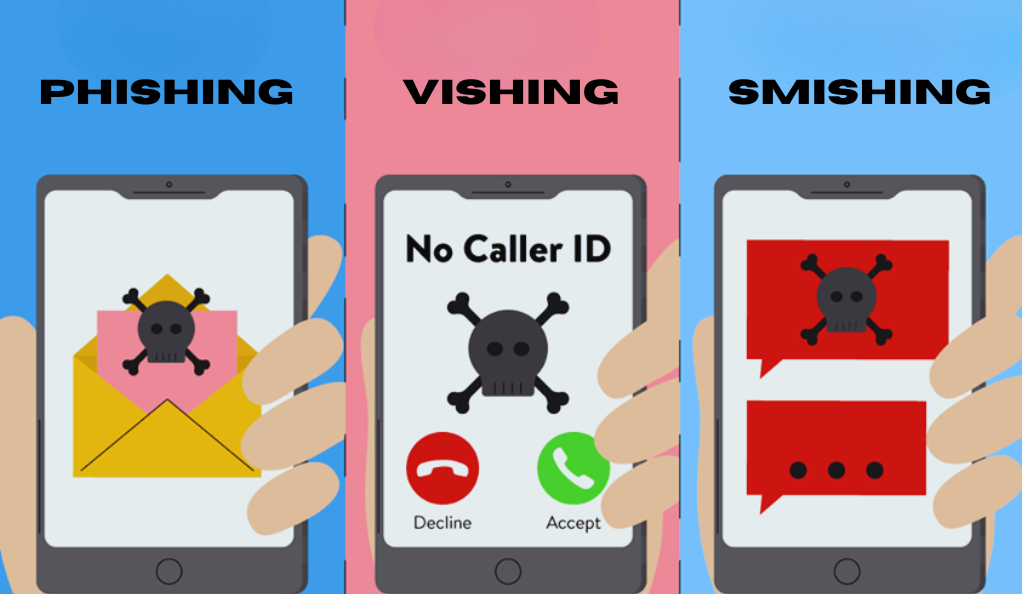Phishing is a cybercrime where attackers masquerade as trustworthy entities to deceive individuals into revealing sensitive information. This can include passwords, credit card numbers, and other personal details. The term “phishing” is derived from the word “fishing,” where bait is thrown out to catch a fish, similar to cybercriminals “fishing” for unsuspecting victims. As the digital world expands, the avenues for phishing have also grown, making it a prevalent threat in today’s online environment.
The Evolution of Phishing Techniques
- Spear Phishing: Spear phishing targets specific individuals or organizations. Unlike broad phishing campaigns, spear phishers gather personal information about their targets to increase their chances of success. This personalized approach makes spear phishing more dangerous, as the emails can seem very convincing.
- Vishing: Vishing, or voice phishing, involves phone calls where the attacker pretends to be from a legitimate organization, trying to trick the victim into providing personal information. These calls can be very persuasive, often using fear tactics like claiming there’s an issue with the victim’s bank account.
- Smishing: Smishing uses text messages to lure victims. These messages often contain a link that, when clicked, installs malware or leads to a fraudulent website. With the rise of mobile device usage, smishing has become an increasingly popular phishing method.

Recognizing Phishing Attempts
- Suspicious Email Addresses Always check the sender’s email. If it looks suspicious or doesn’t match the organization’s official domain, be wary. Cybercriminals often use slight variations of legitimate email addresses to deceive their targets.
- Generic Greetings Phishing emails often use generic greetings like “Dear Customer.” Legitimate organizations usually use your name. This impersonal approach is a red flag that the email might not be genuine.
- Urgent or Threatening Language Phishers often create a sense of urgency, like claiming your account will be closed unless you act immediately. This tactic is used to rush victims into making mistakes.
The Anatomy of a Phishing Email
Phishing emails often contain:
- Misspellings or poor grammar. These errors can be a sign that the email isn’t from a legitimate source.
- Requests for personal information. Legitimate organizations won’t ask for sensitive details via email.
- Mismatched URLs. Hover over any links without clicking to see where they lead. If the URL looks suspicious, don’t click.
- Altered company logos. If the logo looks off or is of poor quality, it might be a phishing attempt.
Protecting Yourself from Phishing
- Two-Factor Authentication Enable two-factor authentication for an added layer of security. This method requires two forms of identification before granting access, making it harder for phishers to gain unauthorized entry.
- Regular Software Updates Keep your software updated to protect against vulnerabilities. Cybercriminals often exploit outdated software to carry out their attacks.
- Educate Yourself Stay informed about the latest phishing techniques. Knowledge is your best defense against these threats.

The Role of Antivirus in Phishing Defense
A good antivirus software can detect and block phishing attempts, providing real-time protection against malicious links and attachments. It’s essential to keep your antivirus updated to recognize the latest threats. Regular scans can also identify and remove any malware that might have slipped through.
The Importance of Firewalls
Firewalls act as barriers between your device and potential threats, ensuring only safe connections are established. They monitor incoming and outgoing traffic, blocking any suspicious activity. A robust firewall can significantly reduce the risk of phishing attacks and other cyber threats.
Reporting Phishing Attempts
If you suspect a phishing attempt, report it to the appropriate authorities. This can help prevent others from falling victim. Many organizations have dedicated channels for reporting these threats. By taking the time to report, you’re playing a crucial role in the fight against cybercrime.
The Future of Phishing
As technology evolves, so will phishing techniques. Staying educated and vigilant is the key to staying safe. With advancements in artificial intelligence and machine learning, phishing attempts may become more sophisticated, but so will the tools to combat them.
Conclusion
Phishing is a constant threat in the digital age. By understanding its techniques and equipping ourselves with the right tools, we can navigate the online world safely. Always be cautious and think twice before sharing personal information online.
FAQs
Phishing aims to deceive individuals into revealing sensitive information, which can be used for fraudulent activities or sold on the dark web. By posing as trustworthy entities, phishers can manipulate victims into willingly handing over their details, leading to financial losses or identity theft.
Check for suspicious email addresses, generic greetings, urgent language, misspellings, and mismatched URLs. Additionally, always be wary of unsolicited emails requesting personal information or urging you to click on a link or download an attachment.
Yes, good antivirus software can detect and block phishing attempts, offering real-time protection. However, it’s crucial to keep the software updated to recognize and combat the latest threats effectively.
Change your passwords immediately, especially for accounts linked to the compromised information. Monitor your accounts for suspicious activity and inform the appropriate authorities. It’s also advisable to run a full system scan to check for malware.
No, phishing can occur through various means, including phone calls (vishing) and text messages (smishing). Always be cautious of unsolicited communications, regardless of the medium, and verify the authenticity of any request for personal information.








